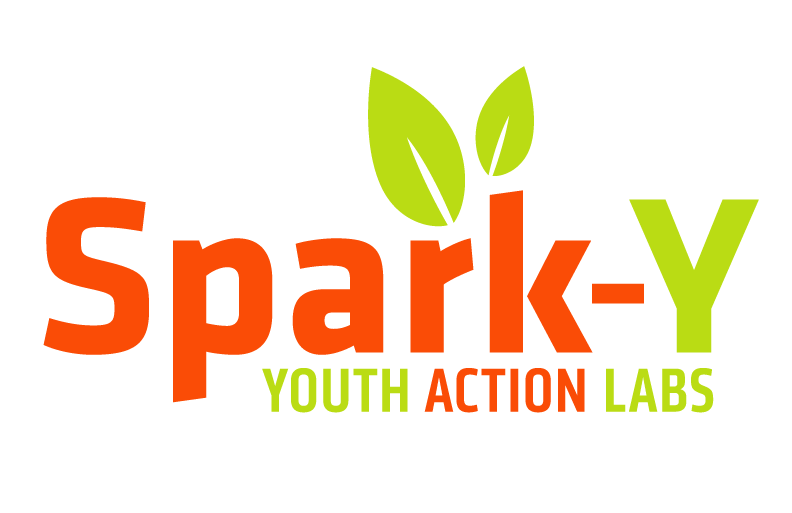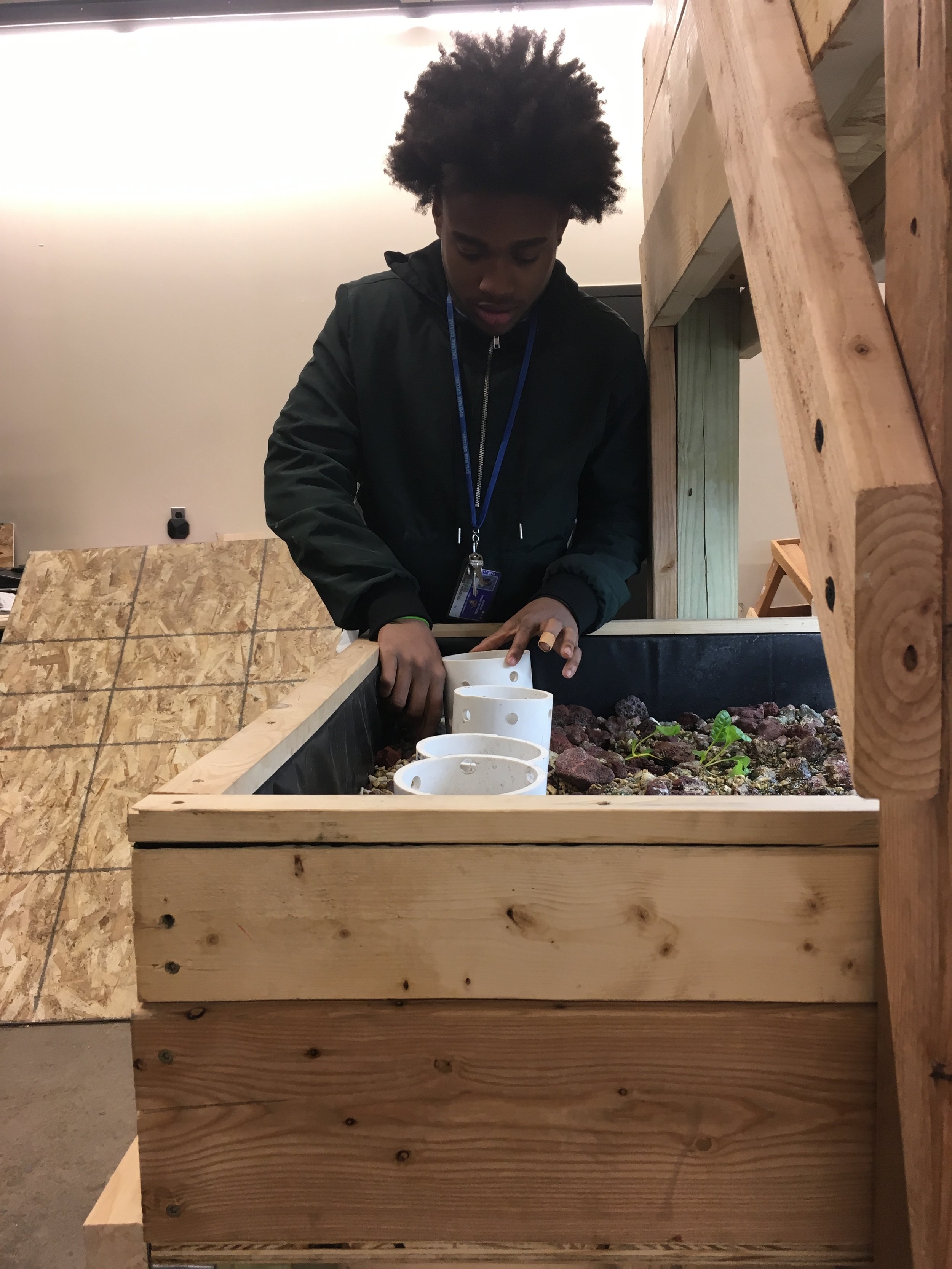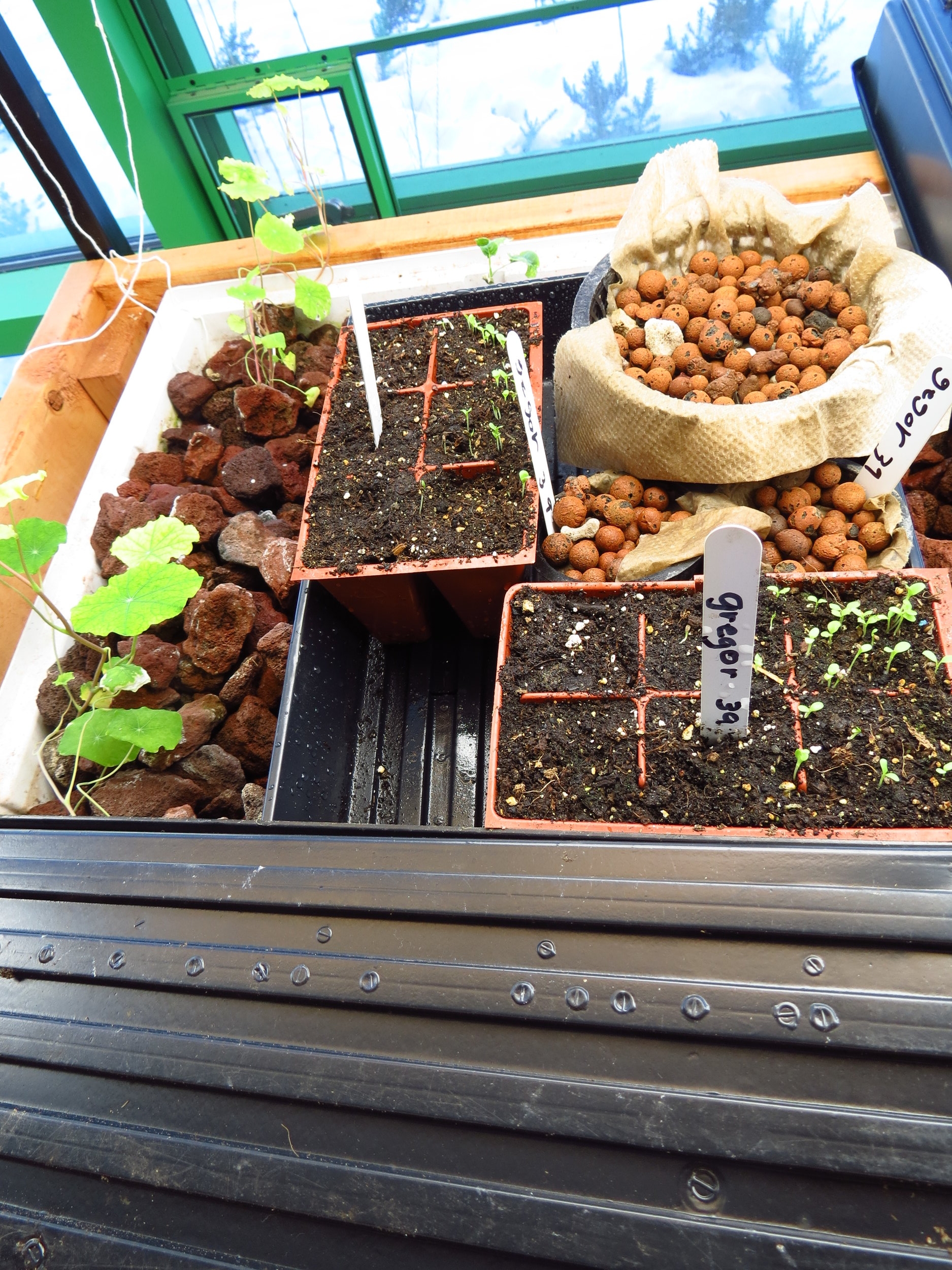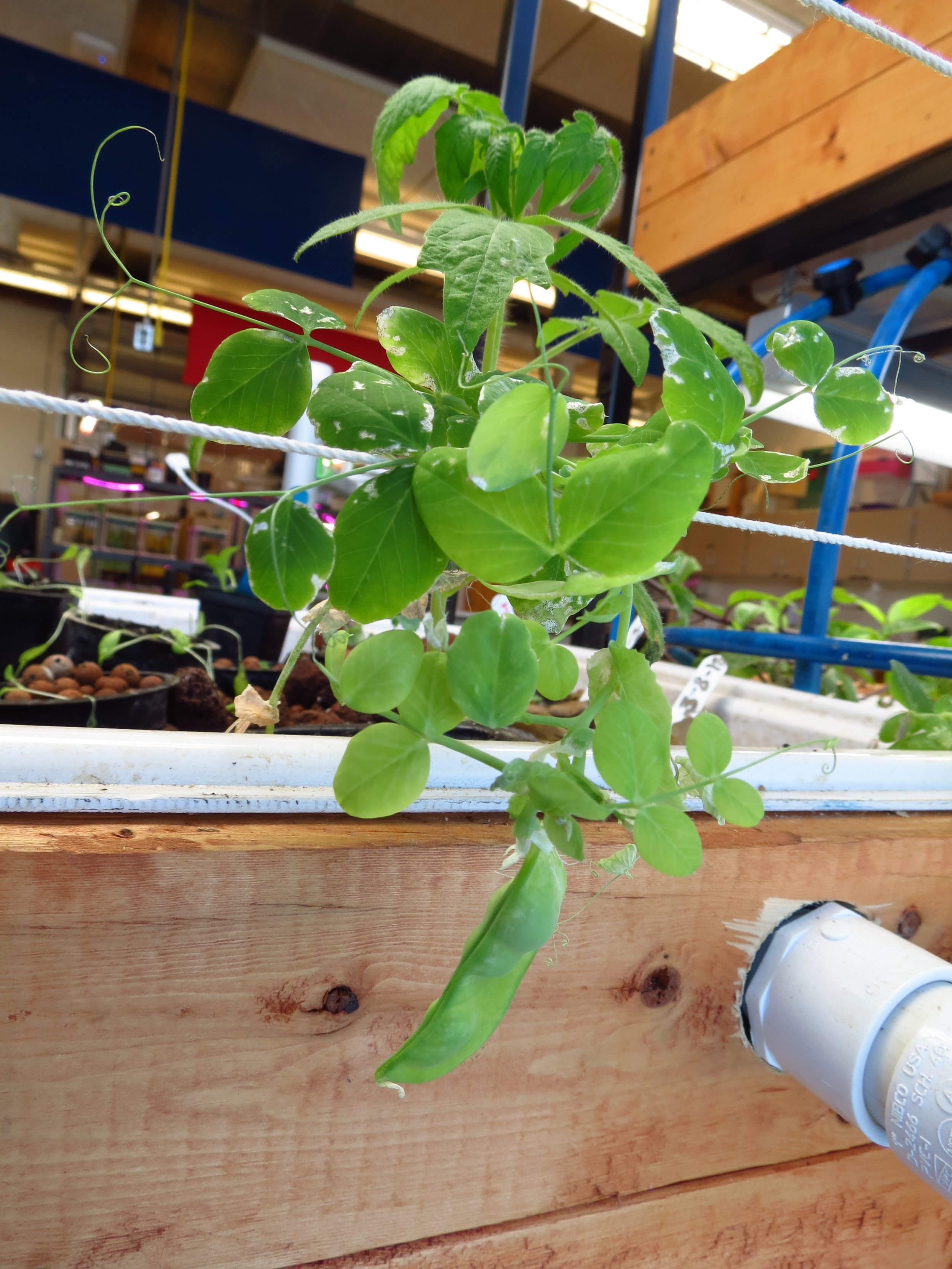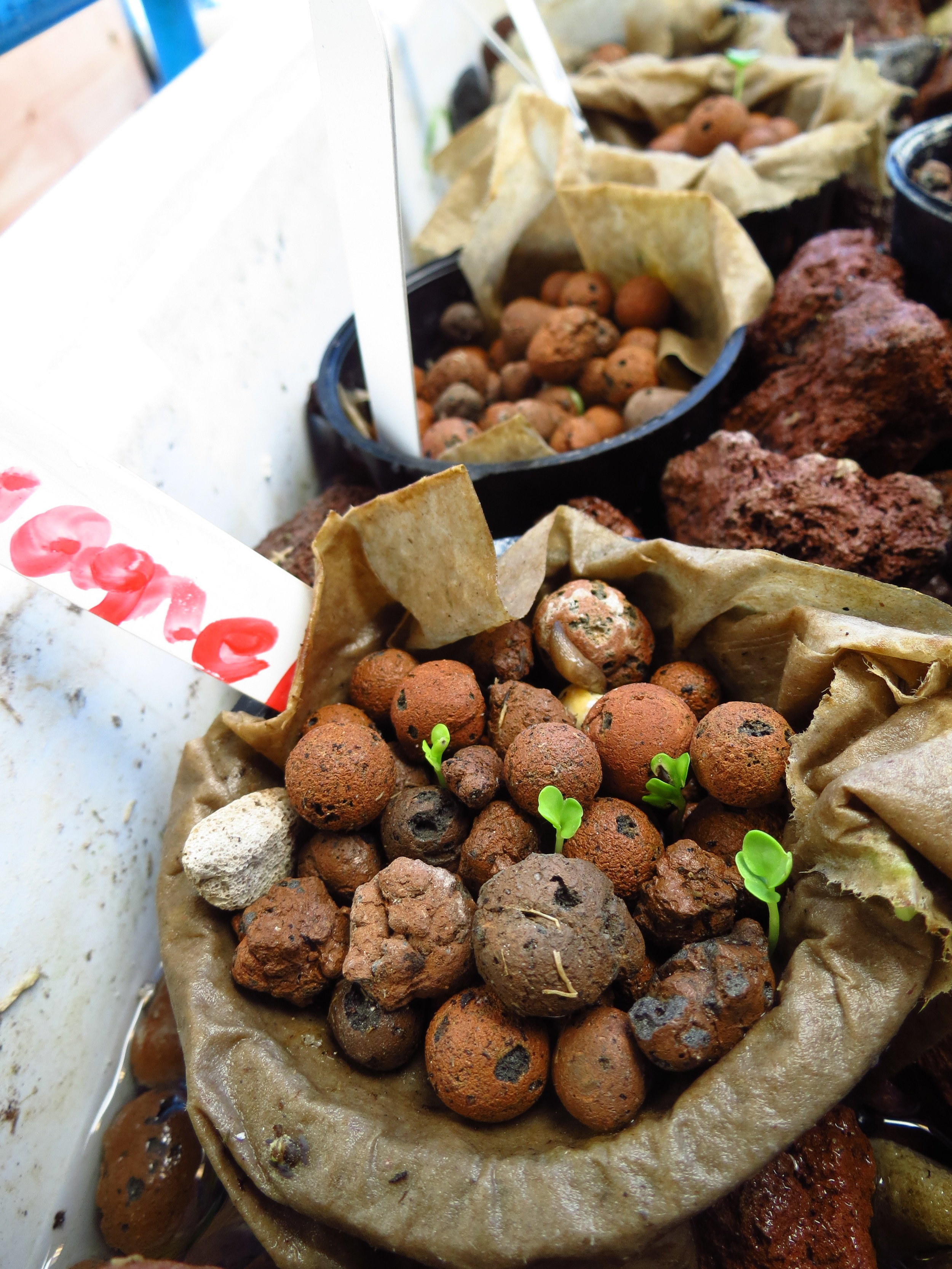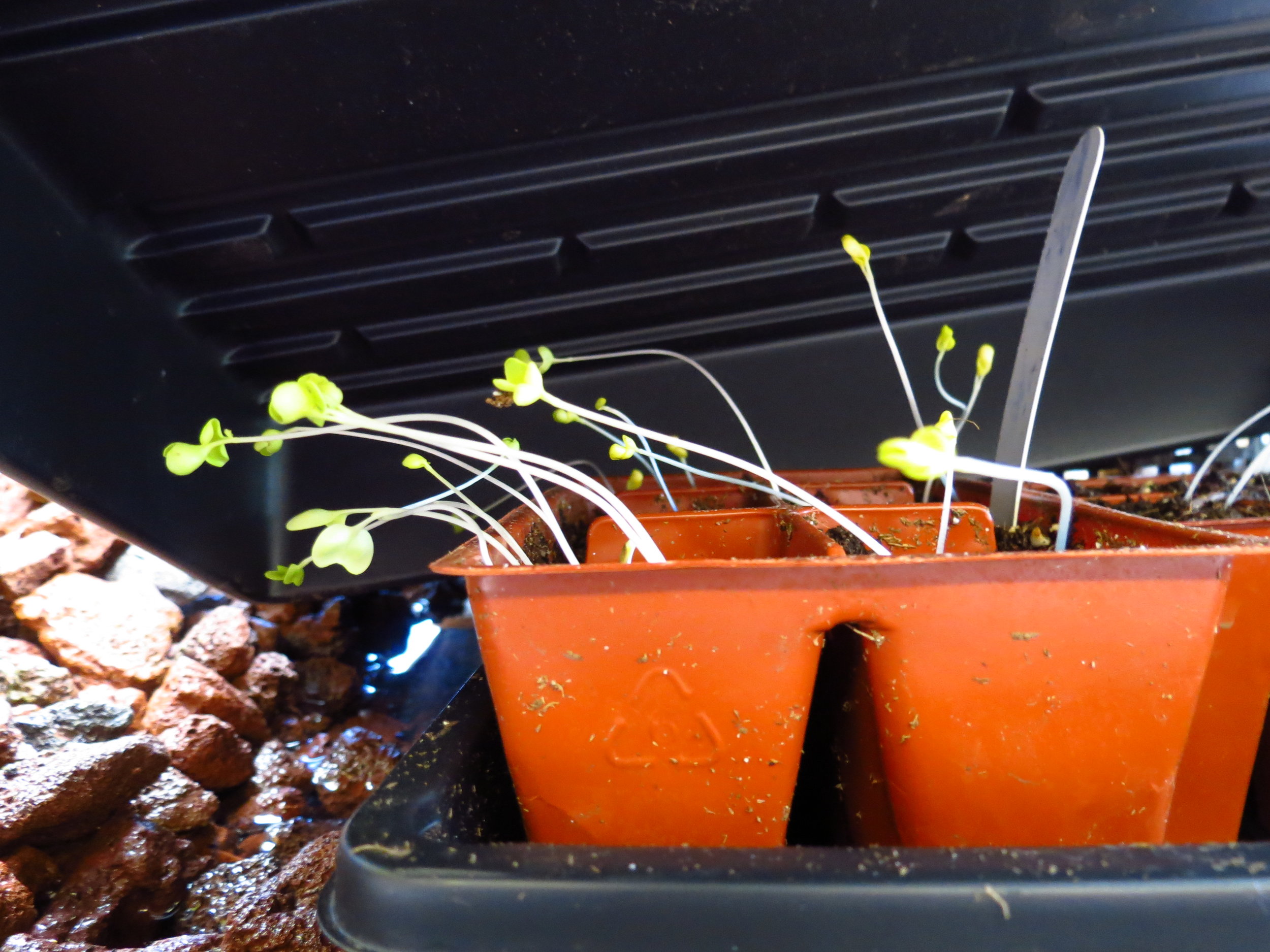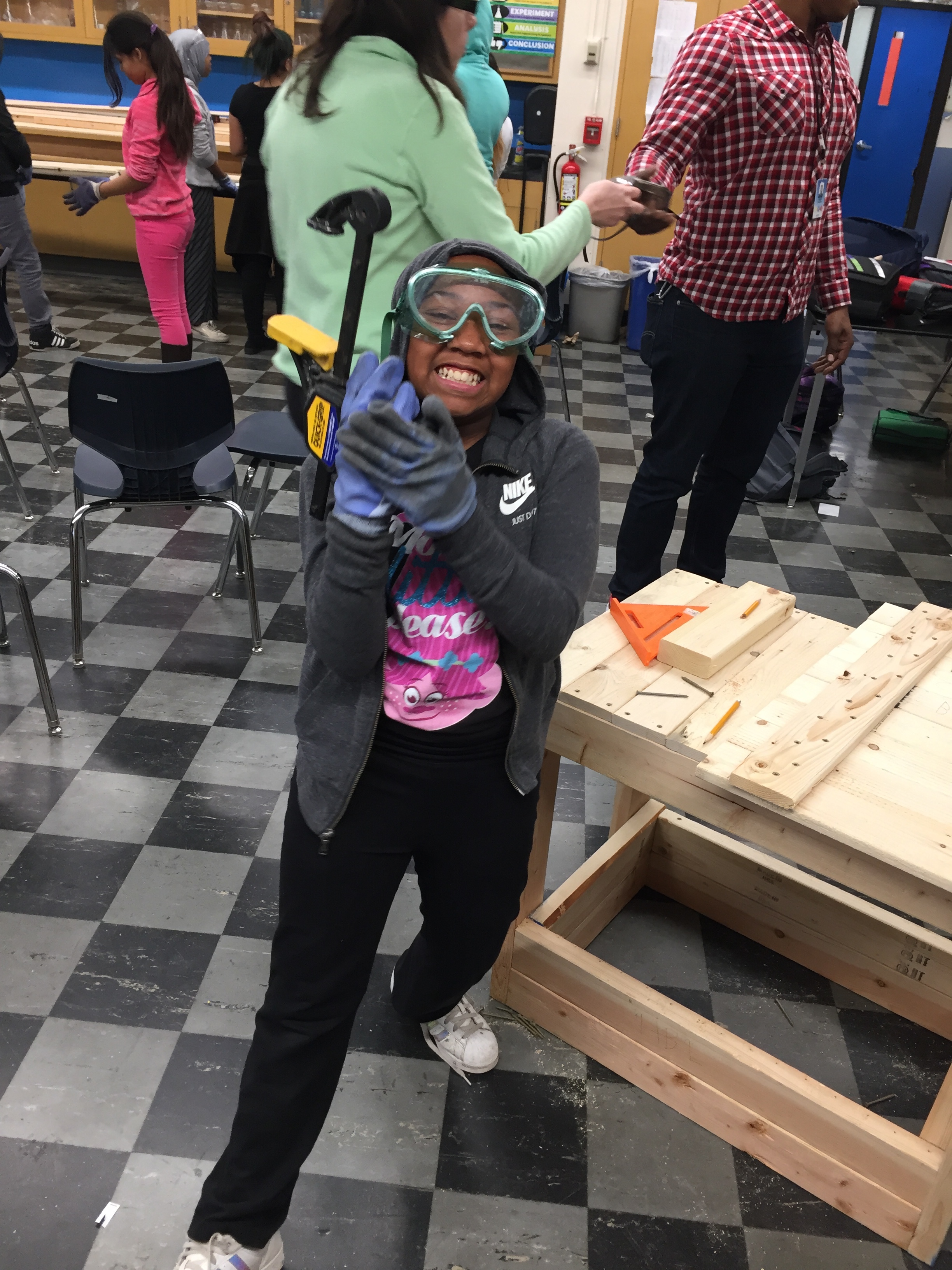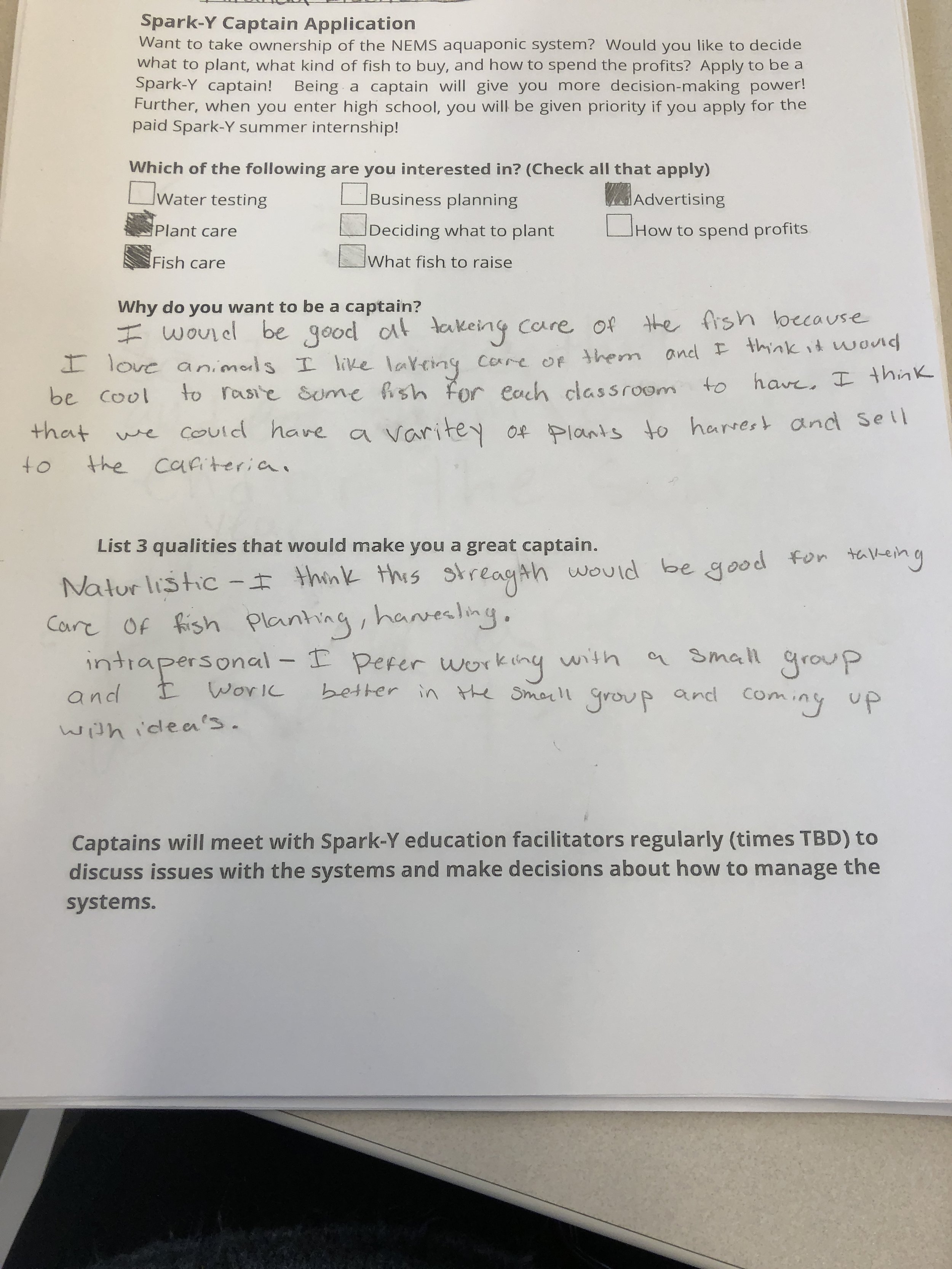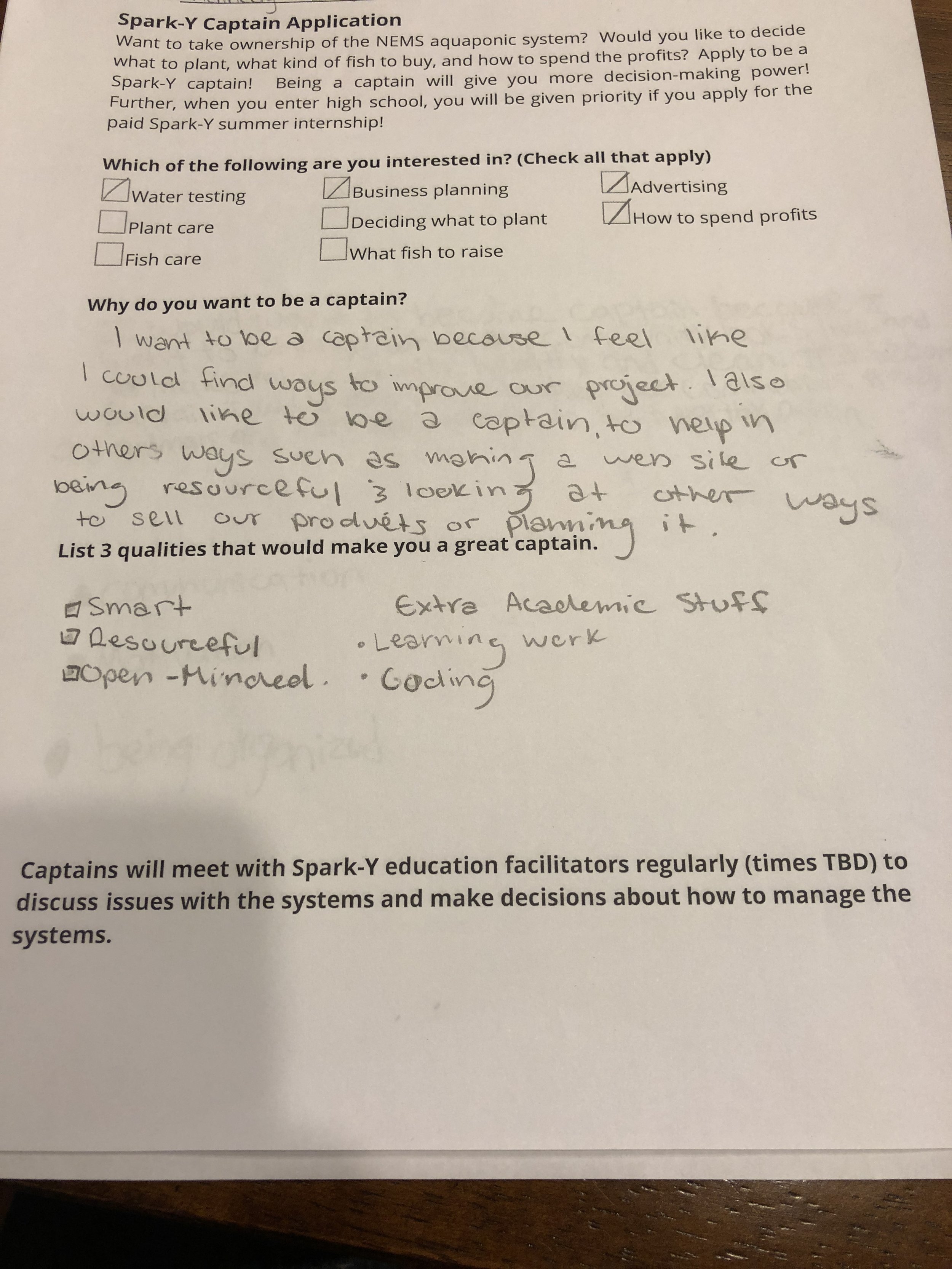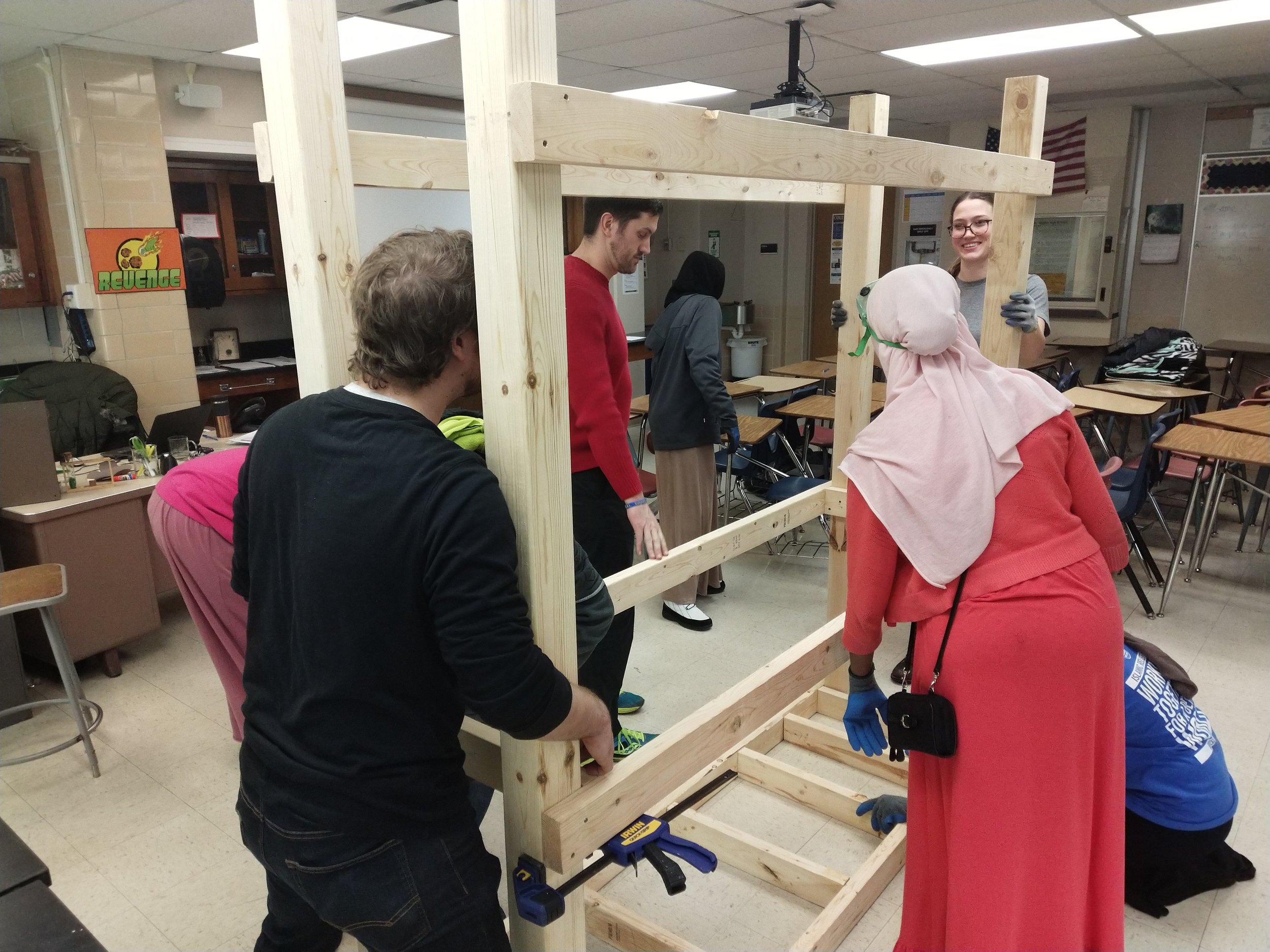The following blog post was written by Sarah Pilato,
Spark-Y Education Facilitator.
Students in Edison High School’s EASYpro (Edible Agricultural School Yard Professionals) class are facing quite an interesting challenge this spring. How do they establish and maintain a successful garden when it seems like this winter will never end?
This has so far been a very exciting and busy year for EASYpro students. The 2017-18 school year marks Edison High School’s pilot year as part of Minneapolis Public School’s Garden to Cafeteria program. Being involved in this program means that any food that is grown at Edison can be sold to the school’s cafeteria and served to students during lunch. Edison has several different agricultural components on their campus that are serving a huge purpose in this program. The Edison farm consists of a campus garden, a greenhouse, and an aquaponics system that the students care for throughout the year.
FALL PROGRAMMING, A SUCCESSFUL START
This year’s class dove right into the program with an incredible amount of enthusiasm. After completing their two week food safety training, the class participated in their first official harvest!
With the help of last year’s spring 2017 class and Spark-Y summer interns planting and maintaining the garden, there was plenty to be harvested in the fall. This first harvest included a basket full of delicious cherry tomatoes, fresh basil and chives, and some pumpkins.
The initiative taken by the students was a meaningful experience. Students harvested, delivered, and even washed produce with the staff - chatting about new potential recipes they could make from their harvest. After this first experience, it was impossible to keep students out of the garden! (Not that we would want to.)
SPRING PROGRAMMING GONE AWRY
After being cooped up inside for several months during the bitter Minnesota winter, everyone has been getting quite antsy to be outside in the garden again. The class was just gearing up to prepare the garden space by cleaning out the beds, tilling the soil, and building some new trellises, but wouldn’t you know it, winter decided to make another comeback.
A surprise snow storm that hit over this past weekend left some parts of Minneapolis covered in as much as 15 inches of snow (yikes!). All that snow threw a bit of a wrench in the garden planning process. The class quickly learned from this experience that nature doesn’t always stick to the schedule you want it to.
Ever the resilient bunch, EASYpro students are not letting this obstacle slow them down. A few students still got out there this last week to problem solve and make decisions about moving forward. Some resourceful thinkers on the team decided to utilize extra space in the aquaponics system to continue growing seedlings that can be transplanted once the snow clears. This kind of adaptability is what is making Edison High School truly successful in this endeavor!
Thanks to their hard work, the aquaponics system is growing more than it ever has. The class even hopes to make a harvest of spinach and chard from this system that they can deliver to the cafeteria very soon!
Let’s hope that this was the LAST of winter for this year so we can all start moving forward with garden season!
Anthony working on the aquaponics system
Swiss Chard
Beautiful & healthy growing in our aquaponics system.
Edison's Aquaponics System
Just after construction and not yet planted.
